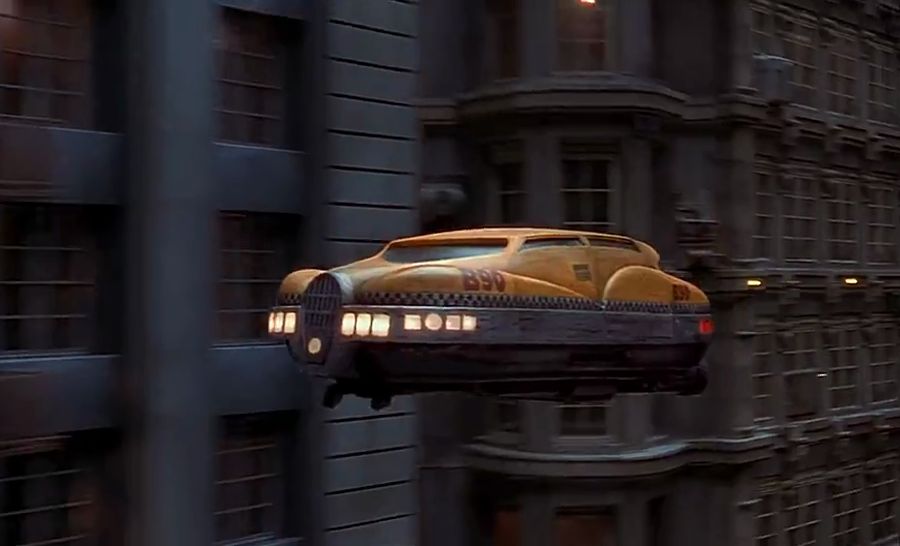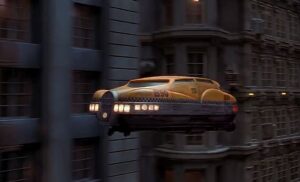The most famous Taxis in cinema

Cinema has used Taxis as a recurring feature in countless films throughout history. These cabs have become an iconic element in many scenes and have left an indelible mark on popular culture. Since the early 20th century, this iconic form of transportation has been a recurring element in many cinematic stories.
In the early decades of cinema, cabs were often depicted as a fast and convenient means of getting around town. Films such as Fritz Lang’s “Metropolis” in 1927 showed futuristic cabs cruising the elevated streets of an imaginary metropolis. These images were a futuristic vision of how technology could change the way we get around.
In the 1930s, cabs became a staple of film noir movies. These films often featured nighttime scenes in which the protagonists escaped the law by hopping into a cab and fleeing the scene of a crime. The sense of danger and the frenetic pace of these scenes added a good dose of suspense to the stories.
Here is a look at some of the most famous cab movies in film history.
1. “Taxi Driver” (1976)
Directed by Martin Scorsese, this film follows the life of Travis Bickle, a disillusioned Vietnam veteran who becomes a night Taxi driver in New York. With its iconic line “Are you talkin’ to me?” and Robert De Niro’s masterful performance, “Taxi Driver” is considered one of the best films ever made.
2. “Manhattan” (1979)
Woody Allen shows us New York City through the eyes of a writer who falls in love with a young woman played by Mariel Hemingway. The famous yellow taxis appear in several emblematic scenes of this film.
3. “Collateral” (2004)
Tom Cruise plays a hitman who kidnaps a taxi driver, played by Jamie Foxx, to take him on several night missions. This action-packed thriller takes place entirely inside the taxi, making the vehicle a main character in the plot.
4. “The Fifth Element” (1997)
This science fiction film directed by Luc Besson presents us with a future where flying cabs are the most common form of transportation. Korben Dallas, played by Bruce Willis, navigates the chaos of the city with a futuristic vehicle in one of the most memorable sequences of the film.
If we leave the movies, there are currently several companies developing prototypes of flying taxis, also known as vertical take-off and landing vehicles (eVTOL).
These taxis are similar to helicopters or small airplanes, but are designed to fly autonomously and have the capacity to carry passengers. These flying taxis, which look like something out of a fictional movie like “The Fifth Element,” promise to be a faster and more efficient transportation solution in the future.
5. “Taxi Express” (1998)
French comedy directed by Gérard Pirès, written and produced by Luc Besson, which was so popular that it spawned several sequels and an American version. The plot follows an inept taxi driver and a police detective as they team up to catch a group of bank robbers. “Taxi Express” shows the adventures and misadventures of these characters inside G7 company cars.
6. “The Illusionist” (2006)
This film follows the story of an illusionist, played masterfully by Edward Norton, who falls in love with a young lady in Vienna in the early 20th century. The cab appears several times as a means of transportation for the main characters, helping to create the romantic and mysterious atmosphere of the plot.
7. “Taxi Tehran” (2015)
Cab Tehran is a 2015 Iranian film directed by Jafar Panahi. The film follows Panahi, who plays a fictionalized version of himself, as he drives a yellow cab through the streets of Tehran picking up and dropping off different passengers. Throughout the journey, issues such as government repression, censorship and the situation of women in Iran are addressed. The film was received with positive reviews and won several awards at international festivals. It is also considered an important work of the New Wave of Iranian cinema.
8. Women on the Verge of a Nervous Breakdown
“Mujeres al borde de un ataque de nervios” is a Spanish film directed by Pedro Almodóvar in 1988. The plot follows Pepa, an actress who finds herself in the middle of a series of chaotic events as she searches for her lover, Ivan, who works as a voice actor. As Pepa embarks on a frantic search to find him, comical and absurd situations unfold in her apartment. The world of cabs is related to the plot when one of the secondary characters, Candela, takes a taxi to escape her personal problems. Throughout the film, the taxi becomes a stage where revealing conversations and crucial moments for the story unfold. In addition, the taxi driver becomes involved in the plot in unexpected ways, which adds a touch of humour and chaos to the film.
In recent years, taxis have also appeared in films that explore themes such as immigration and cultural diversity, portraying the stories of taxi drivers who become narrators of the experiences of the society in which they live.
Taxis with his taxi meters have been a recurring element in cinema since the early 20th century, depicting different aspects of urban life and offering a wide variety of stories. Whether as a fast and convenient means of transportation, as a setting for thrillers or as a vehicle for comedy or love, taxis have been an iconic element in many films over the years.









